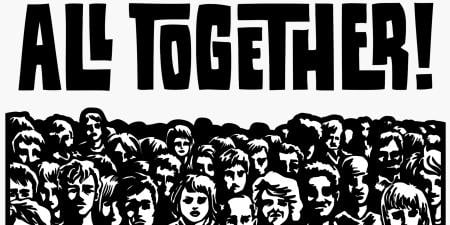As a response to anthropogenic—that is, human-caused—climate change, nearly every sector of public and private life has been scrutinized by ecologists. Automobile pollution, greenhouse gas emissions from livestock, aerosol cans, and individual reproduction have all been topics of environmental policy and practice in the United States since the 1960s [1]. Nearly 30 years ago medicine’s attention was first brought to the effects of ecological matters such as pollution and carbon emissions on human health, concerns that have come to be referred to as “environmental bioethics.”
Efforts to quantify “the environmental impact of health care…to determine the potential value of mitigation efforts and to reduce harm associated with health care delivery” [2] have come primarily from several scholars and a few notable journals. This article will provide background on the integration of environmental ethics into health care [3]. I will move chronologically through a brief history of the field.
Van Rensselaer Potter
Van Rensselaer Potter’s first book Bioethics: Bridge to the Future expanded the concerns of medical ethics—such as responsibility and rational action—to other branches of life like ecology [4]. Potter saw the interconnectedness of human life and nature as self-evident, given that we humans are situated in a natural environment, and sought to connect us not just to health within the hospital, but to holistic life in the world as well.
In 1988 he published his second and last book Global Bioethics: Building on the Leopold Legacy [5]. Global Bioethics attempted to link the medical industry back to our earthy origins. Although medicine was made by and for humans, we had come to dominate “nature” instead of live harmoniously with it. In the opening pages Potter laments that, “with the focus on medical options, the fact that bioethics had been proposed to combine human values with ecological facts was forgotten by many” [6]. Potter considered continuation of the species to be of the utmost importance, but he recognized that there was an “ecological need to limit the exponential increase in the human population…[and] no program [of conservation or advancement] can hope to succeed without the acceptance of controlled human fertility as a basic ethical imperative for the human species” [7]. Potter’s work located bioethics in the bios—the life in the world—and drew a connection between medicine and conservation. His foundational writings opened the door for multidirectional progress in environmental bioethics in the years to follow.
Jessica Pierce
In the late 1980s, about a decade after Potter’s second book, Dr. Jessica Pierce appeared as a major advocate for environmentally sustainable advances in medical and hospital practices, taking up Potter’s work for a “second generation” of environmental bioethicists.
In 1997 Pierce examined the idea of “greening” health care products [8, 9]. Connecting what happens within the walls of hospitals to the natural world suggested avenues for change. She discussed reducing the use of hazardous chemicals in facilities and using environmentally friendly cleaning products, now common practices in many hospitals and other businesses.
Noting that “about 25 percent of health problems are already environmental in origin” [10], in 2001 Pierce demanded that the health care industry examine the way in which human health was inextricably linked to our ecosystem and dependent on a healthy planet. She called for bioethics to examine “health care’s shared responsibility for the environmental problems created by the acquisition, processing and transportation of natural resources required to make the supplies and energy used by consumers” since “health care services represent a significant sector of intensive North American economies” [11]. Her vision for sustainable health care combined the conservationist sensibilities of ecology, the call for slowing the rapid development of the global marketplace, and the more specific conclusion that health care, too, must become “smaller.”
The Canadian Medical Association Journal and the Journal of Medical Humanities
The years between 2000 and 2003 saw growing academic interest in environmental bioethics and issues related to human health and planetary sustainability. The Canadian Medical Association Journal and the Journal of Medical Humanities both ran series exploring ecology and medical ethics. The editorial piece introducing the Canadian Medical Association Journal’s 2000-2001 series on environmental bioethics credited Michael McCally, MD, for suggesting the articles on human health, the economy, social justice, and national environmental security [12]. The nine articles in the series covered population and consumption, climate change, ozone depletion, cancer, war, endocrine disruption, species loss, sustainable health care, and risk assessment [13]. The diversity of publications attested to the varied concerns of environmental bioethics.
Dovetailing with this effort, in 2002 the Journal of Medical Humanities dedicated an entire issue to the declining environment and health care [14]. Authors wrote on such varied topics as “environmental thinking,” the role of natural light in human health, the Amish ethos of placing communal needs above individual rights to prolonged life, the need for simple living and a restructuring of the global economy to aid public health, connections between ecofeminism and feminist bioethics, the allure of biotechnologies and implications of resource diversion on a planet with limited resources, and the role of nature and childlike wonder in our declining years. This expanded the notion of environmental bioethics from a field solely relevant to medicine to one that was also of interest to literature, religion, feminism and global justice, thus solidifying the interdisciplinary character of environmental bioethics.
In 2004, Jessica Pierce co-authored (with Andrew Jameton) The Ethics of Environmentally Responsible Health Care [15]. This full-length treatment of environmental bioethics was one of the first books since Potter”s to address the health needs of human beings—both current and future—and the limits of the shared ecosystem that sustains us. Focusing specifically on the United States health care system, the book highlights the tensions between health care needs in developed and the developing world, the individual and the community, and the limits of the planet and the demands of a growing human population.
Recent Trends
Nearly ten years passed before another “generation” of environmental bioethics emerged. In 2012 two promising developments brought environmental bioethics back to the forefront of medicine. David Resnik’s Environmental Health Ethics revisited the trails that Potter and Pierce had blazed and expanded on issues of nutrition, natural disasters, and public health [16]. In addition, the American Society for Bioethics and Humanities (ASBH), which has an affinity group for environmental bioethics, sponsored an undergraduate conference entitled “Bioethics: Intersections of Global Health and Environmental Policy” [17].
The impact of climate change on the human population has continued to receive interest in the medical industry, urging conservation to better the lives of those who currently suffer under the effects of global warming, including conditions of food scarcity, respiratory disease and drought. It seems that at every turn there is a new organization [18], ethicist [19, 20], or initiative [21], like the Healthy Hospitals Initiatives [22] and Practice Greenhealth [23], ready to take on the challenge of environmental degradation and human health, health care, and personal responsibility. Health care professionals and those who teach them must be prepared to examine the implications of carbon dioxide emissions on human well-being and make decisive steps towards sustainability.
References
-
Many trace the inception of the environmental movement in the US back to the seminal text by Carson R. Silent Spring. Boston: Houghton Mifflin; 1962.
- Chung JW, Meltzer DO. Estimate of the carbon footprint of the US health care sector. JAMA. 2009;302(18):1970-1972.
-
I have integrated ecological ethics in two different settings: in the course Interdisciplinary Approaches to Bioethics at the Experimental College of Tufts University in the spring of 2012 and om the course Health Care Ethics at Massachusetts College of Pharmacy and Health Sciences.
-
Potter V. Bioethics: Bridge to the Future. Upper Saddle River, NJ: Prentice Hall; 1971.
-
Potter V. Global Bioethics: Building on the Leopold Legacy. East Lansing, MI: Michigan State University Press; 1988.
-
Potter, Global Bioethics, 1-2.
-
Potter, Global Bioethics, 2.
-
Pierce J. Can you use a “greener” cleaner? Hosp Mater Manage. 1997;6(3):58-60.
-
Product review yields cleaner, greener use of chemicals. Healthc Facil Manag. 1997:54-62.
- Pierce J, Jameton A. Sustainable health care and emerging ethical responsibilities. CMAJ. 2001;164(3):365-369.
-
Pierce, Jameton, 366.
-
Ecosystem evasion and health (editorial). CMAJ. 2000;163(5):489, 491.
-
A list of the article in the series can be found at Bailer J, Bailer A. Environment and health: 9. The science of risk assessment. CMAJ. 2001;164(4):503-506.
-
See the environment-themed articles in J Med Humanit. 2002;23(1):3-92.
-
Pierce J, Jameton A. The Ethics of Environmentally Responsible Health Care. New York: Oxford University Press; 2004.
-
Resnik D. Environmental Health Ethics. New York: Cambridge University Press; 2012.
-
American Society for Bioethics and Humanities. National Undergraduate Bioethics Conference at Georgetown University. April 5-7, 2013. http://nubc2013.org/. Accessed July 17, 2014.
-
Catholic Health Association and Practice Greenhealth. Environmental Sustainability: Getting Started Guide. St. Louis: The Catholic Health Association of the United States; 2010. http://www.chausa.org/docs/default-source/general-files/gettingstartedguide-pdf.pdf?sfvrsn=0. Accessed July 29, 2014.
-
Most recently discussions have turned from environmental bioethics to “green bioethics.” See Richie C. Building a framework for green bioethics: integrating ecology into the medical industry. Health Care Ethics USA. 2013;21(4):7-21.
-
Richie C. What would an environmentally sustainable reproductive technology industry look like? J Med Ethics. Epub ahead of print July 24, 2014.
-
Roberts I. The NHS carbon reduction strategy. BMJ. 2009;338:b326.
-
Healthier Hospitals Initiative. Lead your community to a healthier future: 2-3. http://healthierhospitals.org/sites/default/files/IMCE/public_files/Pdfs/hhi-brochure.pdf Accessed May 8, 2014.
-
Practice Greenhealth website. https://practicegreenhealth.org/. Accessed May 8, 2014.



